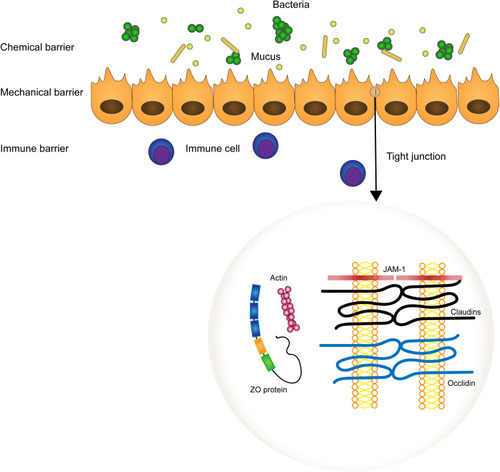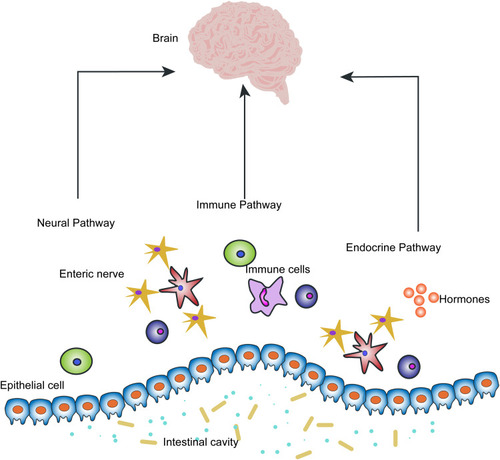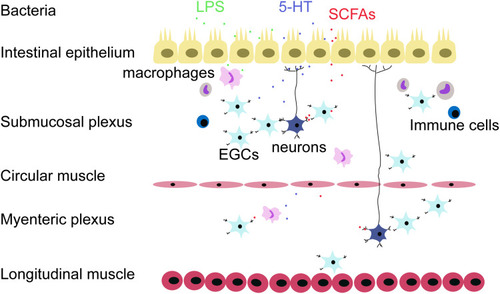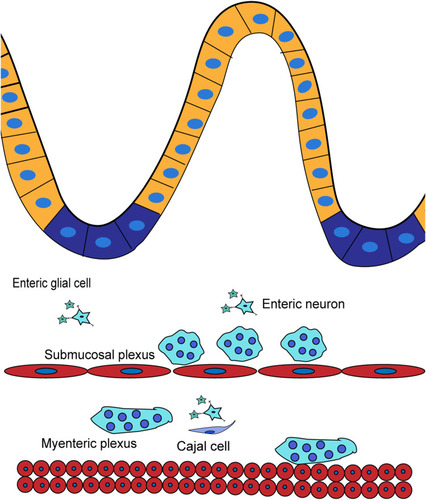Figures & data
Figure 2 The function layers of the neuronal–glial–endothelial unit and the organization of tight junctions. Tight junctions are composed of two membrane proteins the Occludin and Claudins, the intracellular protein ZO protein, which are MAGUK family proteins ZO-1, ZO-2, and ZO-3, and the junction adhesion molecule (JAM).

Figure 3 Pathways of communication between the neuronal–glial–epithelial unit and the brain. The neural pathway, immune pathway and endocrine pathway are three main pathways that exist between the gut and brain, which microbiota can modulate the gut–brain axis.

Figure 4 The neuronal–glial–endothelial unit is an entity which combines both anatomy and function. The epithelial cells are on the front line and ENS interspersed in the following muscular and connective tissue. Scattered immune cells, APCs, and neurons communicate with each other in favor of the complex cellular network. Various cytokines and signal molecules such as LPS, 5-HT, and SCFA target to regulate the neuronal–glial–endothelial unit activity.


